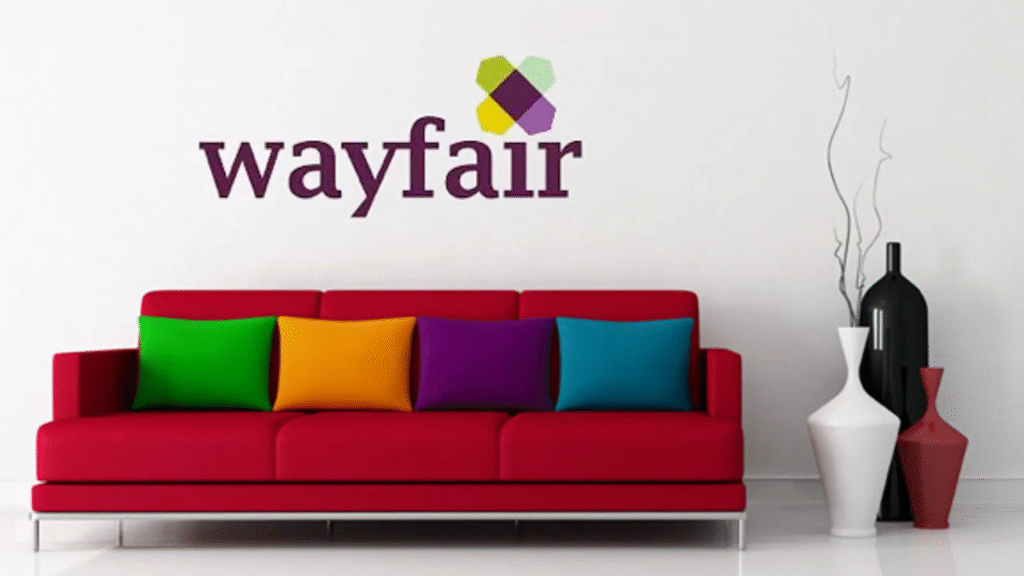Marketing Automation for e-commerce now shapes how online stores attract customers and drive sales growth. By shifting away from tedious manual work like tracking email campaigns and chasing abandoned cart emails. E-commerce brands harness automation tools to work smarter, not harder.
Global e-commerce will reach $6.5 trillion and 3.6 billion buyers by 2029, according to Statista. With increased competition, e-commerce marketing automation provides teams with efficient ways to deliver real-time, personalized messages and automate repetitive tasks without errors or burnout.
E-commerce automation software acts as the core engine for commerce marketing automation. It powers consistent messaging, drives segmentation, personalizes experiences using behavioral triggers, and lets marketing teams build better customer relationships through automation.
Using Marketing Automation for E-commerce, manual chaos turns into automated campaigns that boost sales, increase conversion rates, and save time. Brands can target the right shoppers, set up automated email sequences, and create scalable, data-driven systems that grow revenue automatically.
This guide shares a step-by-step approach to launching e-commerce marketing automation: covering tools, workflows, email marketing, campaign templates, and real-world ideas to future-proof any online store.
What is Marketing Automation for eCommerce?
Marketing Automation for E-commerce uses powerful software to run marketing campaigns, manage customer data, and deliver targeted messages automatically. E-commerce marketing automation tools connect online retailers with shoppers through email marketing, SMS campaigns, push notifications, and dynamic content. All triggered by real customer actions instead of manual work.
With the best marketing automation for e-commerce, brands can automate customer journeys, boost engagement, and improve conversion rates using workflow builders, segmentation algorithms, and behavioral triggers. These tools save time, reduce human error, and create a seamless, personalized experience across every channel.
How does marketing automation for e-commerce work?
- Automation Tools: Launch email campaigns, SMS marketing, retargeting ads, and pop-ups based on triggers like cart abandonment, product page views, or sign-ups.
- Marketing Automation Software: Combines all marketing tasks: email marketing, reporting tools, analytics dashboard, and push notifications in one platform.
- CRM and Customer Data Integration: Syncs all customer data, segments profiles with advanced algorithms, and personalizes content based on user behavior.
- Automated Workflows: Send the right message to the right segment at the right time using real-time triggers and event-based rules.
- E-commerce Platform Integration: Connects your Shopify, WooCommerce, or BigCommerce store with marketing automation tools to manage customer loyalty, re-engage dormant users, and drive repeat purchases.
This setup lets e-commerce businesses run multi-channel marketing, automate email sequences, and focus on revenue growth instead of manual marketing tasks. Teams from various industries can track campaign performance, analyze customer journeys, and build scalable processes that support long-term business success.
Core Components of Marketing Automation for E-commerce
Marketing Automation for e-commerce runs on automation tools and software that handle campaigns, trigger personalized emails, and manage customer relationships with minimal manual effort. Each component transforms marketing tasks into automated workflows, saving time and boosting consistency. By streamlining workflows, marketing automation for e-commerce helps businesses scale efficiently.
Email Campaign Automation

Automated email marketing drives store activity across customer touchpoints. Email campaigns, from welcome series to abandoned cart recovery, are triggered by real-time user actions and work with any email marketing platform. Pre-built campaign templates, A/B testing modules, and email sequence automation nurture leads, improve engagement, and reduce manual work.
Example: Allbirds uses automated welcome emails, restock alerts, and product education flows to connect with leads and drive product discovery using marketing automation for e-commerce.
Customer Segmentation

Segmentation tools group online shoppers by actions, preferences, and purchase history with data from CRM and e-commerce automation software. Segmented campaigns deliver relevant, timely messages to target audiences, improving customer loyalty and retention.
Example: Sephora relies on loyalty program data and order history to send personalized product recommendations and mobile offers, powered by marketing automation for e-commerce.
Workflow Automation

Automated workflows streamline SMS campaigns, push notifications, email marketing, and programmatic ads using marketing automation for e-commerce. These flows trigger from customer actions like purchases, cart abandonment, or sign-ups and coordinate across CRM, e-commerce stores, and ad platforms.
Example: ASOS automates cart abandonment recovery emails, sends time-limited discounts, and uses delivery reminders to re-engage shoppers with automated workflows.
Analytics and Reporting

Analytics dashboards track campaign performance across email, push, landing pages, and digital ads in one place. Integration with Google Ads and other analytics tools helps teams monitor engagement, adjust marketing tactics, and optimize the entire tech stack.
Example: Gymshark leverages marketing automation platforms to monitor metrics, segment new customers, and refine marketing strategies using real-time analytics.
Advertising Workflow Automation

Advertising automation connects customer behavior data to ad platforms for smarter targeting and campaign management. Bid adjustments, dynamic product ads, and lookalike audience campaigns run automatically across Facebook Ads, Google Ads, and display networks.
Example: Nike uses advertising automation to deliver personalized product ads to shoppers across social media and online channels, all managed within their marketing automation for e-commerce suite.
7 Smart Ways to Use Marketing Automation for E-commerce to Increase Sales
Marketing Automation for Ecommerce blends data, precise timing, and context to turn ordinary tasks into automated revenue engines. These seven strategies use e-commerce marketing automation tools and workflows to drive more sales with less manual effort.
1. Recover Abandoned Carts Automatically

Automation tools in marketing automation for e-commerce detect when shoppers leave a cart, then trigger automated emails or SMS reminders within minutes. This brings cart abandoners back and increases completed sales.
Ideas:
- Use a 3-step email sequence: first at 1 hour, second at 24 hours, third with a discount
- Trigger SMS reminders for mobile shoppers
- Add dynamic product images and direct links to checkout
Example: Casper’s personalized follow-ups combine sleep tips and checkout links to recover lost sales with marketing automation for e-commerce.
2. Cross-Sell with Product Recommendations

E-commerce marketing automation tools analyze customer behavior and suggest related products, boosting average order value through cross-selling.
Ideas:
- Add “You may also like” items to emails and landing pages
- Show related products at checkout
- Trigger post-purchase emails for accessories or refills
Example: Amazon uses advanced product recommendation engines and email marketing automation to increase order size.
3. Send Post-Purchase Upsells & Review Requests

Post-purchase automation drives engagement with follow-up campaigns tailored to the buyer’s last purchase.
Ideas:
- Promote upgrades or add-ons in post-purchase emails
- Trigger review requests 3–7 days after delivery
- Send tips or tutorials based on the specific order
Example: Glossier sends how-to content and style tips using automated email sequences linked to each purchase.
4. Reactivate Dormant Customers

Marketing automation for e-commerce software finds inactive shoppers and runs targeted win-back campaigns.
Ideas:
- Launch time-limited offers for lapsed segments
- Identify customers who haven’t opened an email in 30+ days
- Send push notifications with reward points or sneak peeks
Example: ASICS re-engages dormant customers through SMS alerts and exclusive offers with automated workflows.
5. Personalize Offers Using Behavior & Segments

Customer segmentation and behavioral triggers in marketing automation for e-commerce tailor offers and messages based on user profiles.
Ideas:
- Build personalized emails from browsing history
- Send location-based or birthday discounts
- Predict next purchases using AI and analytics dashboards
Example: Stitch Fix combines quizzes, purchase history, and AI-driven recommendations to personalize every customer journey.
6. Automate Loyalty Program Communications

Marketing automation for e-commerce platforms keeps loyalty program members engaged and rewards top buyers in real time. Antavo reports that more than 50% of business owners express satisfaction with their loyalty programs.
Ideas:
- Send monthly points statements
- Trigger emails for unlocked rewards or VIP invites
- Use mobile push notifications for instant updates
Example: Starbucks delivers personalized perks, visual milestones, and push reminders through loyalty automation tools.
7. Automate Advertising Campaigns with Smart Targeting

Advertising automation links customer data with programmatic ad buying and email marketing platforms, enabling e-commerce brands to run dynamic ads and optimize spend automatically.
Ideas:
- Show abandoned cart ads across Facebook and Google
- Use automated bid management for conversion-focused ad spend
- Retarget shoppers and build lookalike audiences from CRM data
- Schedule campaigns to activate by inventory or season
Example: Wayfair connects CRM lists to Google Ads, serving dynamic product ads based on on-site behavior with marketing automation for e-commerce.
Top Marketing Automation for eCommerce
The best e-commerce marketing automation software aligns with your sales operations, integrates with your existing e-commerce technology stack, and automates campaigns across every channel. The right marketing automation for an e-commerce platform removes repetitive tasks, syncs customer data, and connects every part of your online store for streamlined operations.
Explore the top marketing automation tools for e-commerce brands:
Klaviyo
Klaviyo is built for e-commerce marketing automation. This software sends personalized emails and SMS campaigns triggered by real customer actions. Its segmentation engine, analytics dashboard, and robust workflows help e-commerce businesses boost engagement and automate email marketing.
Ideal for: Growing online stores
Works with: Shopify, BigCommerce, WooCommerce
Strength: Automated email campaigns, SMS marketing, pre-built templates, advanced segmentation
Omnisend
Omnisend covers multi-channel marketing automation for e-commerce. It supports email, SMS, and push notifications with pre-built campaign templates. Omnisend allows fast setup and easy campaign management.
Ideal for: Fast-paced teams
Works with: Magento, Shopify, Wix
Strength: Omnichannel automation, dynamic content, customer segmentation, workflow builder
ActiveCampaign
ActiveCampaign blends e-commerce marketing automation, CRM, and email marketing in one dashboard. With automated email sequences, contact scoring, and powerful segmentation, this tool helps e-commerce brands nurture leads, drive conversions, and manage customer journeys.
Ideal for: Online retailers needing marketing, lead management, and CRM integration
Works with: WooCommerce, BigCommerce, and custom stores
Strength: Automated workflows, segmentation, lead scoring, integrated CRM
Drip
Drip is designed for direct-to-consumer brands seeking advanced e-commerce marketing automation. It delivers data-driven campaign triggers across email, mobile apps, and landing pages. Drip’s visual workflow builder and integrations power customer retention and revenue growth.
Ideal for: DTC e-commerce businesses
Works with: Shopify, WooCommerce
Strength: Visual automation workflows, multi-channel triggers, robust integrations, customer retention tools
Common Mistakes to Avoid in Marketing Automation in E-commerce
Even with the best marketing automation for e-commerce, mistakes in setup, data management, or campaign execution can disrupt customer journeys and waste valuable resources. Here are the most frequent errors and how to fix them using marketing automation tools and best practices:
- Over-Automating Without Testing: Launching too many workflows at once may confuse new customers and create overlapping messages. Test each workflow on a small segment before scaling.
Tip: Start with one or two key flows, such as a welcome email series or cart recovery reminders, then add more based on results.
- Ignoring Segmentation: Sending generic email campaigns or digital ads without customer segmentation leads to poor engagement. E-commerce automation software must use data filters for targeted, relevant content.
Tip: Segment audiences by browsing behavior, purchase history, or order value using your marketing automation platform’s filters.
- Outdated or Messy Customer Data: Marketing automation for e-commerce relies on clean, updated customer data. Errors like duplicate records or old contact info can break workflows and reduce campaign performance.
Tip: Perform monthly data cleanups in your CRM and email marketing automation system. Remove inactive contacts and fix sync gaps.
- Lack of Integration Across Tools: If your e-commerce store, CRM, and marketing automation software don’t sync, campaigns can miss triggers or delay actions. Unified tech stacks prevent errors.
Tip: Use platform integrations or native APIs to keep all marketing tools connected and ensure a consistent customer journey.
- Skipping Human Review: Automation in e-commerce marketing still needs human oversight. Missing review steps can lead to broken links or off-brand content.
Tip: Build checkpoints into your automation workflows. Manually review email templates, campaign logic, and links before launching new products or major flows.
How to Measure the Success of Marketing Automation for E-commerce
Marketing teams must track metrics that reflect real customer behavior rather than surface-level statistics. E-commerce businesses using automation software should measure these key performance indicators:
Email Open Rate and Click-Through Rate
Measure how effective your email marketing automation is at grabbing attention and getting clicks. Track open and click rates with your email marketing platform’s analytics dashboard. Low rates signal a need to adjust subject lines, timing, or content.
- Best for: measuring initial interest across customer touchpoints
2. Cart Recovery Rate
This metric reveals the percentage of abandoned carts that convert to completed sales after automated emails or SMS reminders. Track cart recovery in your e-commerce automation software or CRM platform. Higher rates mean your automation workflows are reaching shoppers at the right time.
- Boosts: conversions from online store traffic
3. Repeat Purchase Rate
See how many customers return to buy again, crucial for loyalty and retention. Personalized emails, SMS campaigns, and automated loyalty messaging all improve repeat purchase rates. Measure this using CRM and marketing automation tools.
- Signals: customer experience quality and automation timing
4. Customer Lifetime Value (CLV)
CLV estimates the total value each customer brings throughout their journey with your online store. Use CRM and marketing automation for e-commerce to track this, helping you optimize customer experience and plan future campaigns.
- Supports: long-term e-commerce marketing planning
5. ROI by Campaign
Calculate the return on investment for every campaign run by your marketing automation platform. Connect ROI to sales from Google Ads, email campaigns, and push notifications using analytics dashboards. Use these insights for budget planning and tech stack optimization.
- Useful for: budget planning and tech stack decisions
Measuring these KPIs helps e-commerce marketing teams optimize workflows, refine strategies, and prove the value of marketing automation for e-commerce.
To Sum Up
Marketing Automation for e-commerce produces measurable results, not just convenience. E-commerce marketing automation tools track campaign performance in real time, enabling brands to make data-driven decisions and improve conversion rates. Metrics from email subject lines to repeat purchase rates help shape every move and maximize ROI, helping e-commerce businesses make data-based decisions.
Using marketing automation for e-commerce reduces errors, targets the right audiences, and personalizes every message to the customer journey. For example, a boutique skincare company boosted retention by building email workflows triggered by shopper behavior.
Leading e-commerce brands win by blending smart automation, quality content, and ongoing campaign reviews. Regular audits keep every automated workflow aligned with changing customer needs and business goals.
Skip repetitive tasks and build campaigns that drive revenue around the clock. Marketing Automation for e-commerce makes it possible.
FAQs on Marketing Automation for eCommerce
1. Can marketing automation work for e-commerce businesses with only a few products?
Yes. Even a small catalog can benefit from automation, such as welcome emails, restock alerts, or abandoned cart reminders. The size of your product range doesn’t limit the value of personalized communication.
2. How do I know if my e-commerce business is ready for marketing automation?
If you’re repeating the same manual tasks (like sending similar emails or tracking customer actions in spreadsheets), it’s time. A growing customer base or rising order volume are also clear signs.
3. Does marketing automation require a developer or an IT team to set up?
Not always. Most marketing automation platforms offer drag-and-drop workflows, pre-built templates, and no-code integrations with e-commerce platforms like Shopify or WooCommerce.
4. What’s the difference between CRM and marketing automation software?
CRM stores and organizes customer data, while marketing automation uses that data to trigger timely messages and campaigns across channels like email, SMS, or ads.
5. Can automation tools track customer behavior across mobile apps and websites?
Yes. Many tools monitor actions like app logins, product views, clicks, and cart activity to fuel behavior-based workflows and retargeting campaigns.

Ruchi Dhimar is a skilled content writer with 5 years of experience. She is passionate about crafting compelling narratives, specializing in writing content for different industries.





